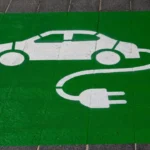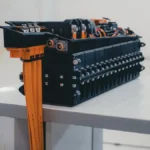Have you ever wondered if the ground beneath your feet is truly stable? For millions of Americans, it’s actually moving downward right now. A groundbreaking new study from Virginia Tech researchers has revealed an alarming reality: 28 major U.S. cities are literally sinking into the earth. This isn’t science fiction—it’s happening slowly every day, potentially affecting the homes and workplaces of approximately 34 million people.
What Is Land Subsidence and Why Is It Happening?
Land subsidence is the gradual sinking or settling of the Earth’s surface. According to the research published in Nature Cities, these urban areas are sinking between 2 to 10 millimeters annually—about the thickness of a nickel each year. While this might seem tiny, the effects compound dramatically over decades.
The primary culprit behind this sinking is groundwater extraction. When cities pump water from underground aquifers faster than nature can replenish these natural reservoirs, the ground above them begins to compact and sink. Think of it like a sponge that dries out and shrinks.
Leonard Ohenhen, the study’s lead author and former Virginia Tech graduate student, explains: “Even slight downward shifts in land can significantly compromise the structural integrity of buildings, roads, bridges, and railways over time.”
Which Cities Are Affected and How Many People Are at Risk?
| Region | Notable Cities | Population Impact |
|---|---|---|
| East Coast | New York, Washington D.C., Boston, Philadelphia | These eastern cities contain millions of residents living on gradually sinking land, with infrastructure dating back centuries that wasn’t designed for this stress |
| South | Houston, Dallas, San Antonio, Memphis, Jacksonville | Southern regions face compounded challenges from subsidence and increasing flood risks, especially in coastal areas already dealing with sea level concerns |
| West | Las Vegas, Los Angeles, San Francisco, Seattle, San Diego | Western cities often face water scarcity issues that lead to more groundwater pumping, creating a dangerous cycle that worsens subsidence |
The research used satellite-based radar measurements to create detailed maps showing that at least 20% of each studied urban area is experiencing subsidence, with 25 of the 28 cities showing sinking in 65% of their territory. This affects approximately 12% of the U.S. population.

The Hidden Danger to Infrastructure
Associate Professor Manoochehr Shirzaei from Virginia Tech’s Earth Observation and Innovation Lab warns that this threat often goes unnoticed until it’s too late: “The latent nature of this risk means that infrastructure can be silently compromised over time with damage only becoming evident when it is severe or potentially catastrophic.”
The consequences of subsidence are already visible across America. Over 29,000 buildings in these 28 cities are at high or very high risk of damage, according to the Virginia Tech study. Here’s what happens:
- Roads develop cracks and uneven surfaces as the ground beneath them settles at different rates, creating dangerous driving conditions and requiring costly repairs
- Building foundations crack and tilt when one section sinks faster than another, potentially leading to structural failure over time
- Underground utilities like water and gas pipes break when the earth shifts, causing service disruptions and possible hazards
- Flood protection systems become compromised, leaving cities more vulnerable to water damage during storms
Houston: America’s Fastest Sinking Major City
Houston stands out as particularly vulnerable, with some areas sinking up to 10 millimeters per year—roughly the thickness of a stack of ten credit cards. The city has struggled with subsidence for decades due to extensive groundwater pumping for its growing population and industries.
The Harris-Galveston Subsidence District, established in 1975, has worked to regulate groundwater withdrawal and slow Houston’s descent into the earth. Their efforts show how management can help—Houston’s sinking has slowed compared to its past rates, though the problem persists.
Solutions: Can We Stop the Sinking?
The researchers recommend several strategies to address this growing problem. These approaches offer hope for affected communities:
- Groundwater management programs that limit extraction and promote sustainable use of aquifers, allowing natural replenishment cycles to stabilize the ground
- Enhanced infrastructure planning that accounts for subsidence risks when designing new buildings, roads, and utilities to withstand gradual ground movement
- Long-term monitoring systems that track subsidence patterns and provide early warnings before damage becomes severe or irreversible
As climate change alters weather patterns and urban populations continue to grow, the pressure on groundwater resources will likely increase in coming decades. Without intervention, the sinking could accelerate, putting more infrastructure and people at risk.
The next time you notice a crack in your driveway or a slight tilt in your floor, remember—it might not just be normal wear and tear. It could be evidence of a much larger phenomenon happening beneath your feet, one that affects millions of Americans and requires our attention before the damage becomes irreversible.











